As North Carolina gears up for election day, let’s take a final look at the data on the pre–election day ballots. Most of the data will come from the John Locke Foundation’s Vote Tracker.
Voter Registration Changes: Republicans Led in Same-Day Registrations
As seen on the John Locke Foundation’s Voter Registration Changes page, Republicans had a net gain of 19,156 registrations compared to 14,189 for Democrats and 9,859 for unaffiliated. Unaffiliated is still well over its total at the same point in 2020, while both Republicans and Democrats are well behind theirs.

The State Board of Elections (SBE) absentee_20201103.zip file includes same-day registration data of those who voted (a very small portion of people who registered at an early voting location but did not vote the same day). The total number of same-day registrations by party is 43,102 Republicans, 39,142 Democrats, and 32,838 unaffiliated.
Unaffiliated Voters End Early Voting on Top
As seen at Vote Tracker, county election boards have accepted 4,453,345 early and absentee ballots through November 3. This falls short of the 4,630,259 pre–election day returns in 2020, although the 4,209,880 early votes is a new record.

The big news in early voting last week was that Republicans outperformed Democrats. That changed this week. Democrats did not retake their old early-voting advantage this week, but unaffiliated voters turned out to become the leading block of pre–election day voters. A plurality of early and mail voters are unaffiliated, at 33.6 percent, compared to 33.3 percent for Republicans and 32.4 percent for Democrats. At the same point in 2020, it was Democrats 37.4 percent, Republicans 31.7 percent, and unaffiliated 30.4 percent. Democrats had an even bigger advantage at the same point in 2016, with them at 41.7 percent compared to 31.9 percent for Republicans and 26.1 percent for unaffiliated.

This is the first time that unaffiliated voters have led early voting turnout. It can partially be explained by their being the largest block of voters in the state at 37.8 percent of all voters compared to 31.3 percent for Democrats and 29.9 percent for Republicans. The same data shows that their turnout rate still trails that of Republicans and Democrats.
Here are the turnout differences by party registration from 2020 to 2024:
- Democrats: -266,200
- Republicans: +31,448
- Unaffiliated: +110,109
The Electorate Is Older, Whiter, and More Female (and Male!) than in 2020
There are also some significant demographic differences between the 2024 and 2020 pre-election electorate.
First, the 2024 electorate is older than it was at the same point in 2020. The number of 18- to 35-year-olds declined from 1,047,415 two days before election day in 2020 to 975,060 in 2024. At the same time, the number of voters over 65 increased from 1,270,656 in 2020 to 1,403,940 in 2024.

The electorate is also whiter in 2024. The White vote increased from 3,027,149 (66.2 percent of the electorate) in 2020 to 3,080,888 (69.2 percent) in 2024, while Black turnout declined from 893,160 (19.5 percent) to 793,906 (17.8 percent).

One odd finding is that the 2024 electorate is officially both more male and more female compared to 2020. The proportion of females increased from 51.2 percent in 2020 to 51.7 percent this year. The male proportion also increased, from 40.8 percent to 41.2 percent.
How is that possible? The number of voters undesignated by sex decreased from 8.0 percent in 2020 to 7.1 percent in 2024. That was because the State Board of Elections found missing demographic data on hundreds of thousands of registered voters in 2021. That jump is seen in the sudden rise of White voters in late 2021, as seen in the yellow circle of the graph below (graph taken from Locke’s Voter Registration Changes page).

The number of Black voters also rose in that 2021 change, but it is not reflected in turnout this year.
North Carolina Presidential Polling Compared to 2016 and 2020
To get some context for all the polls we see for the presidential race in North Carolina, here is a comparison of the Real Clear Politics North Carolina presidential polling averages for the final days before election day, 2024, 2020, and 2016.

One of the underappreciated aspects of the 2016 and 2020 polling is that Trump emerged ahead in the last week of polling before election day in both years, although neither matched the final margin. Trump won in North Carolina in 2016 by 49.8 to 46.2 percent and in 2020 by 49.9 to 48.6 percent.
Comparing North Carolina Gubernatorial Polling to 2020
The final presidential polls suggest another night of drama in North Carolina. The gubernatorial polls? Not so much. According to the final four likely voter polls at 538, Josh Stein leads Mark Robinson 53.0 by 38.8 percent in the governor’s race. At a similar point in 2020, Roy Cooper led Dan Forest 53.5 by 43.5 percent. Cooper won that race 51.5 by 47.0 percent.

But Wait, There’s More!
If you are Jonesing for more North Carolina election data, check out the latest post at Old North State Politics.
Finally, check out Carolina Journal’s live election night coverage on YouTube starting at 7:00. I will be on at 7:00 and again at 8:00.
